A lot of curiosity arises especially when you are traveling to another country and Travelling to Nepal curiosity level reaches to the peak. So, We have noted the FAQS and answered them.
A lot of curiosity arises especially when you are traveling to another country and Travelling to Nepal curiosity level reaches to the peak. So, We have noted the FAQS and answered them.
Lots of question arises in mind, How will be my stay, how is the weather, what are the visa procedures, and so on.
The list goes on and on with never-ending questions
To all curious mind out there interested in traveling to Nepal, we at Adventure Mountain Treks provides answers to all your curosities from the basic to the most advanced we are always there to happily answer your queries and provide you the valuable guidance to make sure your trip goes perfect. Here is the list of some most frequently asked questions , Even if your question is not on the list you can simply contact us and we will be happy to help clear your queries
Nepal Awaits for you
![]()
![]() When is the best time for Trekking and Climbing?
When is the best time for Trekking and Climbing?
The country of Nepal has always remained broadly temperate with its four main seasons centering across the monsoon and summer. When travelers have to consider the best time to visit the country, they should make sure to consider the schedule of most of the visitors and prioritization of mountains’ visibility. The seasons of autumn (September-November) and spring(March-May) are considered to be the best seasons for visiting Nepal, however, Nepal offers its beauties in various forms in all seasons.
![]()
![]() Who will be our Nepal Guide?
Who will be our Nepal Guide?
Your guide while visiting Nepal would mostly be by local people. By hiring them, you’re providing a job—and when local guides are well paid, they often give back to their communities, boosting the overall development of the country. They are someone with experience, wisdom, and expertise to share, be it in the form of personal adventure or identifying indigenous local wilderness of flora and fauna. Nepal has different types of guides; culture and tour guides, trekking guides, yoga-trekking guides, peak climbing guides, birding guides, safari guides, rafting guides, kayaking guides, paragliding guides/instructors, and mountain biking guides. Regardless of the activities, you'll be doing in Nepal, a guide should have certain qualities. The ideal guide will be passionate about guiding, friendly toward others, and makes every visitor feel comfortable and confident. They are environmentally keen, flexible to change your itinerary if necessary, properly trained in the emergency protocol.
![]()
![]() How fit do I need to go for a Nepal Trek?
How fit do I need to go for a Nepal Trek?
If you live elsewhere other than the Himalayas, it will be difficult to get your legs ready for higher altitudes. After all, it won’t get much higher than Nepal. This is why we must be clear upfront: Unless you have ever hiked at a higher altitude before, it will be nearly impossible to get 100% ready for your adventure. If that sounds harsh to you, then calm yourself because no one is 100% ready before their first trek. We don’t recommend you dare attempt the steepest and rugged mountains on your first go. You are trekking. You are supposed to take it easy to your body. Taking it easy is a rule of thumb when you want to prevent altitude sickness while out in Nepal. It doesn’t matter how fit you are, once you step your foot on the trails, you have to go with your own pace. But of course, the fitter you are, the trek will be easier. Easier here doesn’t mean trekking is a piece of cake. So, let’s get fit. You should have a habit of going a hike to different hills.
![]()
![]() Which is the popular trekking destination in Nepal?
Which is the popular trekking destination in Nepal?
Nepalese Himalayas terrain provides a large number of stunning trekking options and routes to individual travelers. Indeed, it is unfair to give a name of only one trek conducted in Nepal as the best one. However, the best mountain treks in Nepal for a person may be according to his or her preferences on features offered by particular trekking available in the country. Trek to the Everest Base Camp Trek to the Annapurna Circuit Region Trek to the Manaslu Circuit Area Trek to Ghorepani Poon Hill Trek to the Langtang Valley Region
![]()
![]() How long should I go Trekking in Nepal?
How long should I go Trekking in Nepal?
To have the best experience of Nepal, plan for three to four weeks; this period will be enough time to complete a serious trek, such as the remote and under-visited Makalu Base Camp or Annapurna Base camp trek to Everest Base Camp trek, and have some extra time left to exploit culture, jungle and other adventurous activities such as rafting, bungee, honey hunting, fishing, paragliding, etc Within three days, tourists can experience the highlights of Kathmandu and appreciate the rich cultural heritage of this ancient city. But many believe that the real Nepal lies outside the busy, congested city, in the hills, mountains, rivers, and lush farmland, forests, and jungles. To experience these natural attractions, a one-week trip will enable you to go on a short trek, river trip, or visit some renowned places near Kathmandu. Two weeks will grant a longer trek, a trip to a national park for a wildlife safari, or a mixed traditional, cultural, and nature tour.
![]()
![]() How difficult is trekking in Nepal?
How difficult is trekking in Nepal?
The level of difficulty while trekking in Nepal depends on the trails you wish to trek. Some treks are very easy and some can but harsh and difficult. If you are a beginner then we recommend you try easier trekking trails before you try a hard one. Langtang valley trek, Ghorepani Poonhill Trek, Mera peak climbing are easy to level treks for beginners.
![]()
![]() When is the best time to travel to Nepal?
When is the best time to travel to Nepal?
There are mainly two seasons that are considered to be best for trekking in Nepal. They are notably called trekking season only by the trekkers. Spring (March, April, May) and Autumn (September, October, November) are the best seasons if you wish to enjoy the perfect beauty of the natural beauty of Nepal. You may visit our blog Best Time to Visit Nepal if you wish to know more in detail.
![]()
![]() Why should I visit Nepal?
Why should I visit Nepal?
Nepal is diverse in many ways. Magnificient natural riches combined with a vibrant culture and sense of history. Ten of the World’s 14 highest mountains lies in the Himalayas range of the country offering a thrilling and adventurous setting for hiking and mountaineering. Apart from that Nepal holds some of the best white water downhill streams perfect for rafting. With its vast range in altitudes, Nepal has an incredible variety of plants and animal species. The national parks in the Terai region (Chitwan and Bardiya) encompass lowland forest and grassland which shelters a rich variety of wildlife. Also, the ancient culture and traditional architecture of the world heritage sites of Kathmandu valley boasts no less than seven world heritage sites. Nepal is famous for its beautiful domed-shaped monasteries as well as the birthplace of Lord Buddha, Lumbini.
![]()
![]() What do I have to do if I have an interest in Nepal, Bhutan, or Tiber tours?
What do I have to do if I have an interest in Nepal, Bhutan, or Tiber tours?
You have to decide the exact or approximate numbers of hours you have to spend in either of the countries and later on, have to check the flight schedule, so that you may choose the dates of your entry and departure. Your exact staying duration in Nepal, Bhutan, or Tibet will decide the total cost involved in your tour package. We calculate the duration based on the exact number of nights you spend.
![]()
![]() How will we make our Trek and Tour journey?
How will we make our Trek and Tour journey?
We provide you almost everything to you to make your comfortable trek and tour journey. These include horses, elephants, planes, rickshaws, motorbikes, buses, mountain bikes, and cars, along with going by own foot. Along with AC and deluxe buses, you may also opt to make your journey via jeeps in case you have to go through various rough terrains. If this is not enough, you may even travel via domestic flights depending on specific itineraries.
![]()
![]() Where is Nepal located?
Where is Nepal located?
Geographically, Nepal is a small landlocked country, fully enclosed by India on three sides, and the huge mass of China to the north. West to east, Nepal is approximately 800 Km or 500 miles across. Nepal’s width is in the range of 90 to 150 miles.Nepal lies in Southeast Asia.
![]()
![]() What type of accommodation we may get when traveling to Nepal?
What type of accommodation we may get when traveling to Nepal?
We provide you with a wide range of accommodation facilities for our trekkers and travelers worldwide, which may range from simple tents to beautiful palaces. In case you arrive for any cultural tour, you may even find options related to budget or deluxe accommodation facilities. Deluxe accommodation facilities consist of both modern and heritage star properties, while budget ones have 3 or 4-star types of properties.
![]()
![]() What is the condition of bathroom and hotel rooms facilities provided to the Tourist?
What is the condition of bathroom and hotel rooms facilities provided to the Tourist?
Regardless you choose any deluxe or a budgeted accommodation facility, you will always find hotel rooms in clean condition with private yet cleaned bathrooms and friendly facilities management.
![]()
![]() Do I have to get a VISA for traveling to Bhutan or Nepal?
Do I have to get a VISA for traveling to Bhutan or Nepal?
If you are an Indian citizen, you only require a valid passport. However, every other nationality requires a visa for entering any of the countries along with a passport. There is an un-arrival VISA service in Nepal so you don't have to worry.
![]()
![]() What are the camping facilities available for adventurous trekkers?
What are the camping facilities available for adventurous trekkers?
If you opt to visit Nepal to experience an adventurous tour, you will expect to get a fully supported camp facility in combination with a few simple yet friendly teahouses or local lodge facilities. Teahouses are of locally owned facilities and because of this; they give valuable contributions to the local economy of the trekking areas.
![]()
![]() Can I perform trekking in the Himalayan region even when I have not trekked before?
Can I perform trekking in the Himalayan region even when I have not trekked before?
Yes, if you have enough good health and undergo physical exercises regularly, such as tennis, jogging, and long walks, you may go for any trip organized by our team.
![]()
![]() What are the types of mountaineering activities we may do in Nepal?
What are the types of mountaineering activities we may do in Nepal?
You may do two types of mountaineering activities in Nepal: Mountain climbing Peak Climbing Trekking is also similar to mountaineering activity but we reach less elevation than peak climbing or expedition and it takes quite fewer days. Trekking is normally done below the elevation of 5,500 meters from sea level. Mostly done Trekking Packages in Nepal : Mount Everest Region Trek Annapurna & Mustang Region Langtang & Helambu Manaslu & Ganesh Himal Off The Beaten Routes New Trekking Trails Hiking is a simple, easy, and very short activity done in Nepal. Hiking is done in a 1-2 day itinerary. Nepal has thousands of wonderful places to do hiking. There are about 100 places just nearby the capital city, Kathmandu.
![]()
![]() Shall I have to carry my own backpack?
Shall I have to carry my own backpack?
No, but you have to carry a few light packing items of the day, which may include a camera, water bottle, an additional layer of clothes, raincoat, sunglasses, snacks, and windbreaker.
![]()
![]() Shall I have to carry my own backpack?
Shall I have to carry my own backpack?
No, but you have to carry a few light packing items of the day, which may include a camera, water bottle, an additional layer of clothes, raincoat, sunglasses, snacks, and windbreaker.
![]()
![]() Shall I require a tour guide or may start with a trek/tour on my own?
Shall I require a tour guide or may start with a trek/tour on my own?
Both ways are possible in many places in Nepal, but hiring a guide and porter through a company is more enjoyable. You don’t have to worry about logistics, you won’t risk getting lost, and if any emergencies arise, you will be well taken care of.
![]()
![]() How can I avoid altitude sickness while trekking across the Himalayan mountain peaks/regions?
How can I avoid altitude sickness while trekking across the Himalayan mountain peaks/regions?
You may experience quite a random effect of altitude and it may or may not relate to your physical fitness. In this case, you may opt to avoid altitude sickness by over-do its activity. You may experience effects of altitude after you cross 3,000m and once you go at such height, you should take a wise decision to ascend only 300 to 400 meters in a day.
![]()
![]() What is the toughness level associated with any trek in Nepal?
What is the toughness level associated with any trek in Nepal?
Our team of professional and experienced trekkers uses a suitable grading system to decide the right trek based on your requirements. These are Gentle treks require you to walk for a maximum of 6 hours in a day and the height of the mountain peaks would remain within 3000m altitude. Moderate treks involve relatively long days to walk i.e. about 7 to 8 hours in a day and the height may be 4000m or more. Difficult treks involve some days with a maximum of 10 hours of walk and may go to a maximum of 5,000m in height.
![]()
![]() What is the toughness level associated with any trek in Nepal?
What is the toughness level associated with any trek in Nepal?
Our team of professional and experienced trekkers uses a suitable grading system to decide the right trek based on your requirements. These are Gentle treks require you to walk for a maximum of 6 hours in a day and the height of the mountain peaks would remain within 3000m altitude. Moderate treks involve relatively long days to walk i.e. about 7 to 8 hours in a day and the height may be 4000m or more. Difficult treks involve some days with a maximum of 10 hours of walk and may go to a maximum of 5,000m in height.
![]()
![]() Will there be cold in the mountain regions of Nepal?
Will there be cold in the mountain regions of Nepal?
Cold weather may depend on the place you opt to visit and the season, during which you schedule your trip to Nepal. Not all of the treks require you to go very high, but in some cases, you have to do so. If you have to travel to high altitudes, you should essentially have warm clothes irrespective of the season you choose to visit.
![]()
![]() How can we become a B2B Partner??
How can we become a B2B Partner??
We do have a B2B partnership available where we will discuss and signed a contract mutually agreed upon ,prepare a confidential rate with special tarrif for the business
![]()
![]() I am a tour leader, how can we become partners?
I am a tour leader, how can we become partners?
YES, we are open to becoming partners,to become partners you can whatsapp us and we can discuss accordingly,Special Services and Discount Prizes are offered to the tour leader with we arranging the logistics and you handling the guest.
![]()
![]() How can you get to work in your business ?
How can you get to work in your business ?
Bring values and follow the contract mutually agreed upon then you are all set to working with us
![]()
![]() We are an outbound travel agent, we want to sell Nepal products, how can we tie-up with you?
We are an outbound travel agent, we want to sell Nepal products, how can we tie-up with you?
We will discuss and signed a contract mutally agreed upon, we will prepare a special confidential rate with special tariffs based on your travel agency requirements and from here handle all the logistics and supply issue accordingly
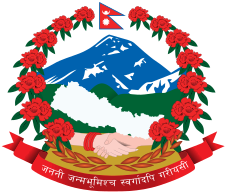
Registered with the company registration office under Nepal Government.
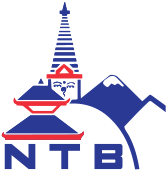
Licensed by Nepal Tourism Board & Department of Tourism.
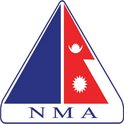
Member of Nepal Mountaineering Association (NMA).
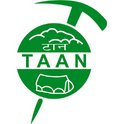
Member of Trekking Agency Association of Nepal (TAAN).
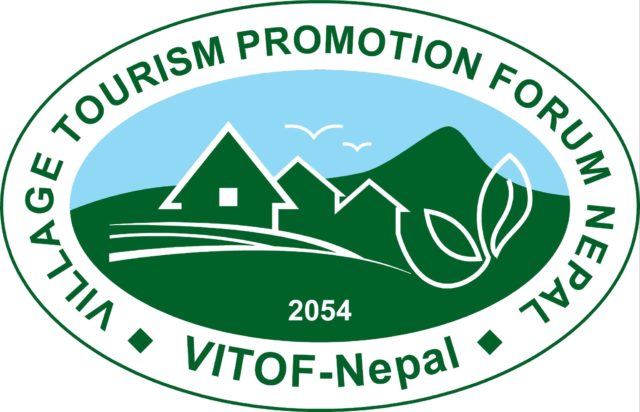
Member of Village Tourism Promotion Forum (VITOF) Nepal.